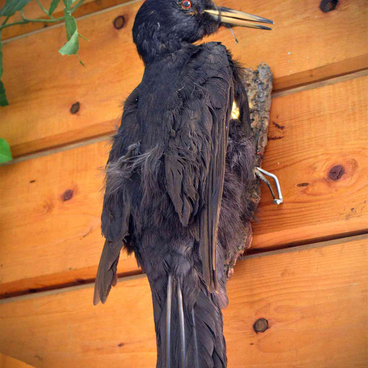The white hare is a relatively large animal. Its size may vary depending on where it lives. The largest of these creatures live in the tundra of West Siberia, where they reach 70 centimeters in length and weigh as much as 5.5 kilograms. Some of the smallest white hares inhabit the tundra of Yakutia. Their weight does not exceed 2.5 to 3 kg. The ears of these animals are not very long and are folded somewhat forward. They only reach the tip of its nose or a little beyond it. Its tail is completely white with a few darker hairs mixed in on top. It is relatively short and round in shape. Their feet are wide and covered with thick pads of hair, which provide a better grip on the snow.
In summer, the fur on its back is chestnut brown flecked with black, its sides are lighter in color and the stomach area is white. In winter time, the white hare stays true to its name. During this season, it has a snow white coat and only the ends of its ears are black. Although this animal’s tail is short, it is readily noticeable outside. The eyes on the sides of its head, which allow the creature to have an almost 360 degree field of view, the enormous ears and an excellent sense of smell help this animal spot a threat on time. Afterwards, it relies on its agility. Hares are the fastest sprinters among small mammals. Their long hind legs allow them to reach speeds of up to 70 km/h.
There is a wide variety of hares. They inhabit completely different biomes, from the Arctic deserts to true deserts. These creatures live in forests, in open grass spaces and high up in the mountains. All in all, there are more than 30 species of hares at present.
These are herbivorous animals. Aside from grass, their diet includes other types of plants depending on where they live. When there is not enough grass and young shoots, white hares can eat cultivated plants, branches and tree bark. They have more than enough enemies, including first and foremost, lynxes, foxes, wolves and large birds of prey. In addition, they are hunted by homeless dogs.
Humans also catch them for their meat and fur. White hares are a key food source for many mammals and birds of prey. The only reason these animals have not become extinct is because they are very fertile. Curiously, offspring of hare-like mammals that bear their young outside of burrows spread out and find a secluded spot during the first three days after their birth. Still, they do gather together in a dedicated location at a very specific time (usually right before sunset) in order to get their share of the milk. Their mother comes approximately 40 minutes after the sun sets in order to feed its young and then leaves again for 24 hours. At the age of 4 to 5 weeks, leverets begin to eat vegetation and their mother stops visiting them.
In summer, the fur on its back is chestnut brown flecked with black, its sides are lighter in color and the stomach area is white. In winter time, the white hare stays true to its name. During this season, it has a snow white coat and only the ends of its ears are black. Although this animal’s tail is short, it is readily noticeable outside. The eyes on the sides of its head, which allow the creature to have an almost 360 degree field of view, the enormous ears and an excellent sense of smell help this animal spot a threat on time. Afterwards, it relies on its agility. Hares are the fastest sprinters among small mammals. Their long hind legs allow them to reach speeds of up to 70 km/h.
There is a wide variety of hares. They inhabit completely different biomes, from the Arctic deserts to true deserts. These creatures live in forests, in open grass spaces and high up in the mountains. All in all, there are more than 30 species of hares at present.
These are herbivorous animals. Aside from grass, their diet includes other types of plants depending on where they live. When there is not enough grass and young shoots, white hares can eat cultivated plants, branches and tree bark. They have more than enough enemies, including first and foremost, lynxes, foxes, wolves and large birds of prey. In addition, they are hunted by homeless dogs.
Humans also catch them for their meat and fur. White hares are a key food source for many mammals and birds of prey. The only reason these animals have not become extinct is because they are very fertile. Curiously, offspring of hare-like mammals that bear their young outside of burrows spread out and find a secluded spot during the first three days after their birth. Still, they do gather together in a dedicated location at a very specific time (usually right before sunset) in order to get their share of the milk. Their mother comes approximately 40 minutes after the sun sets in order to feed its young and then leaves again for 24 hours. At the age of 4 to 5 weeks, leverets begin to eat vegetation and their mother stops visiting them.



